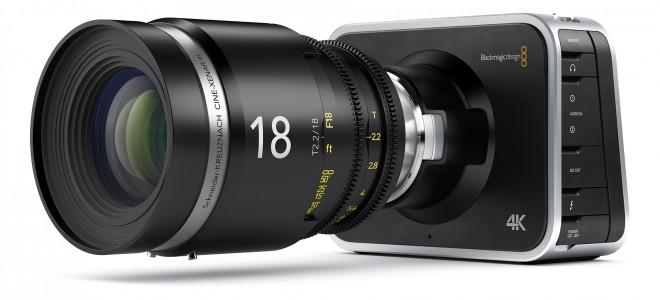
Blackmagic have today announced a $1000 price drop on the BMPC 4K.
I am quite surprised how quickly 4K has dropped into consumer electronics territory. You can buy a 4K TV for around $3k, edit 4K on a $1000 laptop and the cameras have not just recently broken the $4k barrier but smashed it to pieces.
What’s Canon’s consumer 4K strategy? Are they going to capitalise on this like Sony, Panasonic and Blackmagic? Or will they leave 4K as a high end professional Cinema EOS thing? This is a key question and I expect their consumer camcorder division to answer it WAY before their consumer photographic cameras do. Canon don’t have a small chip consumer camcorder like the Sony AX100 that shoots 4K yet. They will need one to compete, so expect this to change in the coming months.
The new Blackmagic price applies to all existing pre-orders made at the higher price.
The camera is aimed at the video and TV production market rather than at the cinema crowd although I am sure a lot of filmmakers will want to use it as well. It does however lack the digital cinema standard of 4K at 4096 x 2160, something the GH4 has. The BMPC 4K clocks in at the Ultra HD standard of 3840 x 2160 in 16:9.
Blackmagic touts the camera as being great for “high resolution music videos, episodic television productions, television commercials, sport and documentaries”. The camera ships with a full license dongle and CD for DaVinci Resolve 10.
Key Features
- Ultra HD 3840 x 2160 resolution (note – no DCI 4096 x 2160 cinema standard like the GH4)
- ProRes 422 (HQ)™ recording (raw is to be added later in firmware update)
- Super 35 sensor
- Global shutter
- EF and ZE compatible lens mount
- Built-in SSD recorder
- 5” LCD touchscreen
- Metadata entry
- 6G-SDI output for 10-bit HD and Ultra HD
John Brawley’s Red One comparison
DP and regular Blackmagic test shooter John Brawley had this to say about the image we can expect from the 4K Blackmagic.
“I would say they both have a similar base ISO. I have always rated RED / MX and even EPIC at 320, despite the rumours that they’re all 800 ISO. I would say 640 is a sweet spot for the 4K, but that ISO doesn’t exist yet 😉
“I wouldn’t be surprised if the RED has a slight edge in DR. RED has a very bottom heavy exposure spread. It’s like it only has a couple of stops from middle grey in over exposure and 7 stops of useable shadow exposure. Blackmagic’s cameras tend to be a lot more centred so you initially find have a lot more headroom. I think people might get a little surprised at how fast it runs out of shadow room though. But like I said, only if you’re used the current high DR generation of cameras.
“Every month there’s a “why is my picture so noisy / what are these vertical lines / what’s this horizontal split line” thread from users underexposing the camera and then lifting it to try and make a useable picture. With even less DR, you’re going to run into those “sensor” level issues more often.”
Clearly it will be best to expose to the right slightly, with the way Blackmagic have optimised dynamic range on the new 4K sensor.
I am really looking forward to the Production Camera. It’s the only affordable 4K camera to date that can do 10bit internal recording. That said I am a bit reluctant at this point to lay down money for one. Why? There’s a LOT of new stuff in the pipeline this year and a lot of it will be here rather soon at NAB in April. The GH4 looks more attractive for me and the 4K image looks stunning despite being 8bit 4:2:0 internal. I think it will need the active Micro Four Thirds mount, PL mount compatibility and better low light performance offered by the GH4 more than the Super 35mm sensor and global shutter in the Production Camera, but let’s see how it turns out once I’ve used both.


